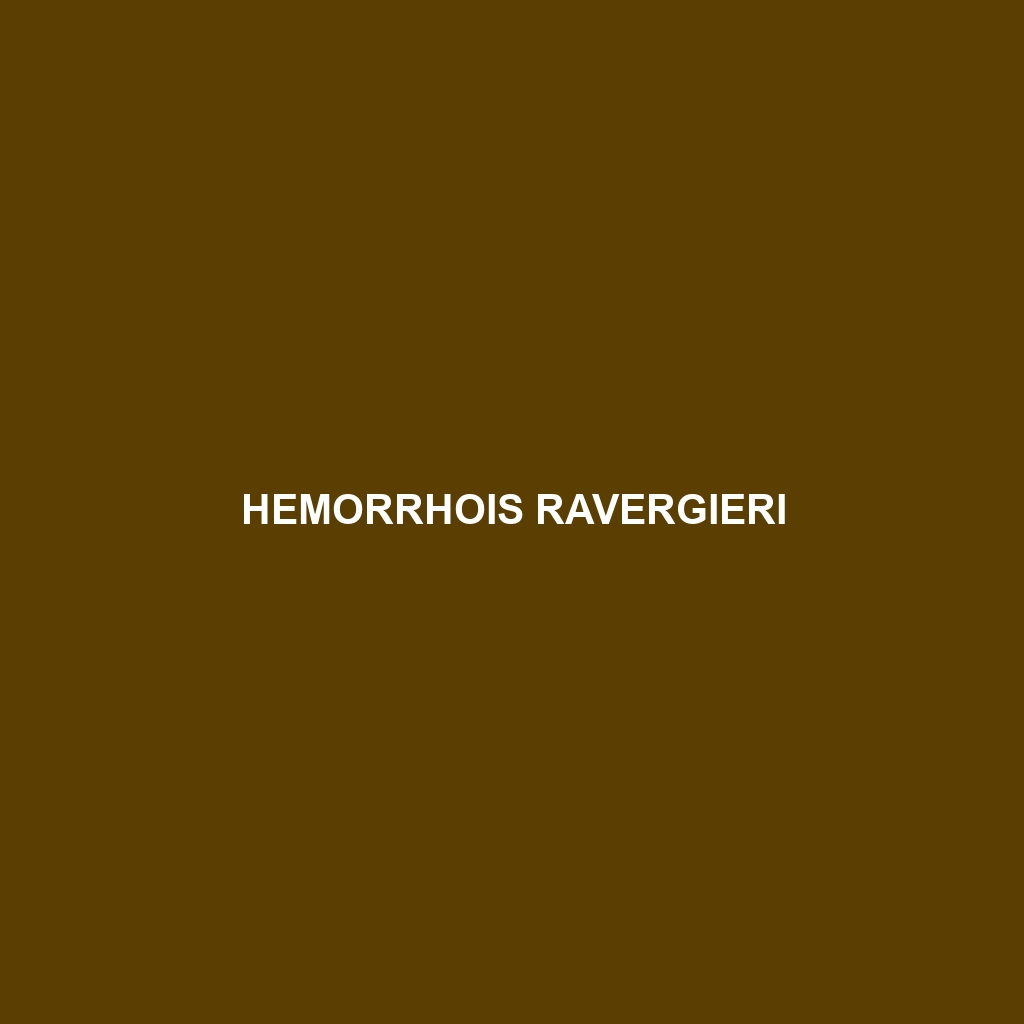Common Name
Hemorrhois ravergieri
Scientific Name
Hemorrhois ravergieri
Habitat
Hemorrhois ravergieri, commonly known as Ravergier’s snake, is primarily found in the geographical regions of Southeast Europe. Its typical habitats include areas within Mediterranean climates, such as grasslands, scrublands, and the edges of forests. This species favors environments that allow for good sun exposure and is often associated with rocky hillsides and agricultural lands. The climate where Hemorrhois ravergieri thrives exhibits warm, dry summers and mild, wet winters, providing the ideal conditions for these snakes to flourish.
Physical Characteristics
Hemorrhois ravergieri can grow to an average length of 1.0 to 1.5 meters (approximately 3.3 to 4.9 feet). The snake exhibits a slender body shape, which is characteristic of many species in the family Colubridae. Its coloration is typically a blend of light brown or gray scales adorned with darker stripes or blotches, aiding in camouflage among its natural surroundings. This coloration helps it blend into its habitat, evading potential predators. The head is distinctively differentiated from the body, with large, oval-shaped eyes that provide excellent vision, critical for both hunting and avoiding danger.
Behavior
In terms of behavior, Hemorrhois ravergieri is primarily a diurnal species, meaning it is active during the day. It displays fascinating social interactions, especially during the mating season when males can often be seen engaging in combat dances to attract females. Notably, this species is known for its adept climbing skills, allowing it to escape from threats and hunt for prey in elevated areas. Its shy nature often leads it to camouflage rather than confront predators, making it a less aggressive snake compared to others. The snake exhibits an interesting variety of behaviors including a tendency to burrow into leaf litter or soil during the hotter parts of the day, showcasing its adaptation to environmental conditions.
Diet
Hemorrhois ravergieri is primarily carnivorous, feeding on a diet that includes small mammals, birds, and occasionally lizards. Its hunting technique involves ambushing prey, using its excellent eyesight and rapid strike to capture unsuspecting victims. This species is not picky and will adapt its diet according to the availability of food sources in its habitat. Known for its role as a predator, Hemorrhois ravergieri helps maintain the population balance of the small mammals and birds upon which it preys.
Reproduction
The breeding season for Hemorrhois ravergieri typically occurs in the spring months, from April to June. The female lays a clutch of eggs, ranging from 4 to 8, depending on environmental stressors and resource availability. After a gestation period of around 30 to 60 days, the eggs hatch in late summer. The young snakes are born fully formed and are independent from birth. Parental care is minimal, as the mother usually leaves the eggs after laying them, emphasizing the species’ reliance on instinctual survival skills from a young age to navigate their environment.
Conservation Status
The conservation status of Hemorrhois ravergieri is currently classified as Least Concern according to the IUCN Red List. However, habitat loss due to urban development and agricultural expansion poses potential threats to its population in certain regions. Conservation efforts focus on habitat preservation and raising local awareness about the ecological role of this species to ensure its populations remain stable in the coming years.
Interesting Facts
One interesting fact about Hemorrhois ravergieri is its remarkable ability to adapt to various environments, which allows it to thrive even in fragmented habitats. Additionally, this species has been observed engaging in communal basking behavior during cooler months, where multiple individuals will bask together in sunny spots to regulate their body temperatures effectively. This social behavior indicates a level of interaction that is relatively uncommon among snakes and highlights the unique social dynamics within its species.
Role in Ecosystem
Hemorrhois ravergieri plays a crucial role in its ecosystem as a predator of small mammals and birds, helping to control their populations and maintain a balanced food web. Its predatory presence not only benefits its habitat but also supports a diverse range of organisms by preventing overpopulation of prey species. Furthermore, as part of the food chain, Hemorrhois ravergieri serves as a food source for larger predators, emphasizing its position as an integral part of the ecological community it inhabits. By contributing to the dynamics of the ecosystem, this species exemplifies the importance of biodiversity in maintaining healthy habitats.
